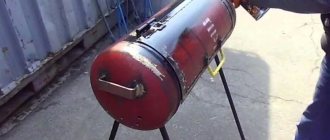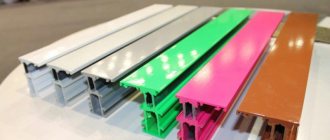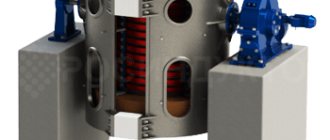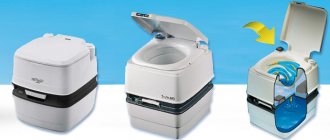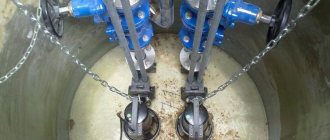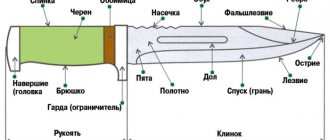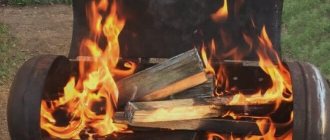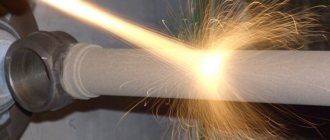Painting metal gives the surface of this material a more aesthetic appearance and helps protect it from the negative effects of the environment. And when using special dyes, it can significantly reduce losses on heating mains.
Unfortunately, regular paint is susceptible to burning and charring. Therefore, if painted metal is used under harsh temperature conditions, the protective layer completely burns out or peels off when heated without the use of an open flame.
If it is known that a metal part will be operated at high temperatures, then special fire-resistant paint is used to paint it.
Characteristics of heat-resistant paints
Heat-resistant paints and varnishes include products that can withstand temperatures from 100°C. After drying, they form a reliable, plastic and vapor-permeable protective film. This coating does not change its properties even under temperature loads up to 700°C.
The main advantages of paintwork materials:
- Environmental Safety. During operation, no toxic substances are released from painted surfaces.
- Thermal conductivity . Paint applied to a fireplace, radiator or stove does not interfere with heat transfer.
- Elasticity of the coating. When heated and temperature changes, cracks do not form on the protective layer.
- Inert to household chemicals. Painted surfaces are inert to detergents, do not fade from their use and are easy to clean.
- Good hiding power. To obtain an even and high-quality coating, one to three layers are sufficient.
Heat-resistant products also play a decorative role. For this purpose, compositions of different colors and structures are produced. Coolants do not lose their performance characteristics when used.
Types of heat-resistant paints
Manufacturers offer a large selection on the coatings market. There are four groups based on the content of paint components.
- Organosilicon. They are a suspension consisting of polyorganosiloxane polymers, resins and solvents. A variety of colors are obtained from inorganic and organic pigments. The painted layer does not fade at temperatures up to 150˚C. It dries within two hours and can withstand heat up to 600˚C.
- Acrylic. They are produced by mixing acrylates in water or in a hydrocarbon composition with pigments, antiseptics and modifiers. The coating does not change its properties at temperatures up to 400°C. Paint enhances the strength of brick and mortar by penetrating deeply into their structure. Drying speed up to 24 hours. The disadvantage of this type is the lack of bright colors. Color-enhanced shades quickly fade.
- Alkyd. This type contains resins, dyes, white spirit solvent, plasticizers and fillers that increase resistance to high temperatures. The protective coating does not lose its properties at temperatures up to 150°C. Paints are used to treat the outer walls of boilers, heating radiators, and hot water pipelines. Drying speed of layers is from 8 to 24 hours. The disadvantages of this type are: pungent odor, low elasticity and the formation of cracks in the coating.
- Heat-resistant varnish. The basis of the material is organosilicon resins. To increase heat resistance, acrylic is added to them. The varnish has good hiding power, moisture resistance and film strength. Drying time 30 – 50 minutes at 20˚C. The coating does not change its structure at temperatures up to 200°C.
Coatings and varnishes for metal are produced. Components are added to their composition that increase anti-corrosion properties. Coloring agents for mineral structures are used to process stone, brick, and cement.
There are universal paintwork materials suitable for any surface. Metal, brick and cement surfaces are coated with such products. They are suitable for processing wood, glass and fabric. The range of paint and varnish products includes powder paints. They give the products a characteristic shine.
Heat-resistant paint and varnish coatings are produced in tin and plastic containers, in cans, containers, buckets, and spray cans.
Features of aerosol paints
The use of sprays allows you to evenly paint products of non-standard design, hard-to-reach places, cracks, and gaps. They do not require special preparation, mixing or dilution. Aerosol paints are easy to apply, dry quickly, and form an even, durable layer.
When choosing such paint, you need to look at the characteristics and carefully study the instructions for use. It is necessary to take into account the maximum temperature that the coating can withstand during operation.
Spray dyes thicken when stored for a long time. It is impossible to return them to their original state. A can that has not been used for a long time should be disposed of.
Scope of application of heat-resistant coatings
These types of paints are used in all areas of the national economy. Application of heat-resistant coatings is necessary in the following cases.
- Protection of heating metal coolants and units in industrial enterprises, factories, utilities and in the private residential sector.
- Finishing of evacuation places in buildings according to fire safety requirements.
- Applying a protective layer to pipes of main heating networks and gas pipelines.
- Processing of vehicle parts, mufflers, drums.
- Creation of thermal protective coating for all types of stoves, pipes, heat exchangers, chimneys, fireplaces, radiators.
- Painting of fireplace components: handles, doors, dampers and frames.
Heat-resistant paints are used in the production of household appliances. They cover parts of electric and gas stoves, electric dryers, boilers, and water heaters. Heat-resistant products are used to paint equipment in baths and saunas.
Types of heat-resistant coatings
The most popular are high-temperature finishing materials in the following forms of release:
- heat-resistant enamel in a jar or bucket;
- heat-resistant spray paint in cans.
One form or another should be used depending on the location of treatment and personal preference. It is convenient to apply the enamel with a roller over a large area, and aerosol paint will help you reach corners and hard-to-reach places.
Manufacturers produce heat-resistant paint on different bases. They differ in their basic properties, scope, ease of application and safety. On store shelves you can find the following coatings:
- acrylic;
- alkyd;
- epoxy;
- silicone.
Oil-based paints should not be applied to a surface that is heated, since when exposed to high temperatures they release harmful volatile substances with a characteristic unpleasant odor.
Heat-resistant paint for metal
Metal and brick stoves, fireplaces and their elements, heating communication systems of the residential sector are coated with paints and varnishes not only to improve their decorative qualities, but also to maximize their service life.
The classification of coloring agents for metal is similar to the division of mixtures intended for mineral structures. But it is not recommended to replace them with each other.
Means for processing metal products are supplemented by the following compositions:
- Epoxy - can withstand heat up to 200°C.
- Ethyl silicate and epoxy ester - suitable for use at 400°C.
- One-component silicone - have proven themselves when operating up to 650°C.
Paints are produced that contain liquid glass and composite materials. The protective properties of such grades are maintained at 1000°C.
Dyes intended for metal surfaces have good adhesion to stainless steel, cast iron, and aluminum. Substances are added to their composition that increase the anti-corrosion properties of the treated surfaces.
How to paint a grill
A special feature of this metal structure is that it is outdoors, under constant exposure to weather conditions. To protect such a surface, heat-resistant paint with the following properties is used.
- Resistant to moisture and adverse weather conditions.
- High level of anti-corrosion properties.
- Resistance to temperature loads from 500 to 1000°C
- Compliance with environmental safety standards.
- High elasticity and durability of the coating.
Stage-by-stage execution of work:
- The surface of the structure is cleaned of dust, dirt and debris.
- If rust is detected, it is removed with abrasive devices.
- All parts of the structure are degreased using alcohol or solvent.
- Before using the coloring mixture, mix it thoroughly and dilute it to the thickness required according to the instructions.
- Paint is applied sequentially. The layers are applied perpendicular to each other. The procedure can be repeated only after the surface has completely dried.
The optimal ambient temperature for painting the grill is from -20 to +40°C.
Criterias of choice
Heat-resistant paints are often called fire-resistant. This characteristic indicates resistance to specific temperatures.
See also
Technology for applying pearlescent paint and how to make it yourself
The paint, intended for treating surfaces exposed to temperatures up to +650 degrees, is produced on the basis of heat-resistant glass and composites. Heating to temperatures below +1000 degrees is usually typical for barbecues, stoves, barbecues, fireplace grates, and various home radiators.
Heating from +1000, more than +1200 degrees is typical for industrial production, and involves the use of especially durable paint and varnish compositions, which are applied in any available way.
Painting stoves and fireplaces
To protect the surface of this type of coolant, special heat-resistant compounds are used. Their use provides a number of positive effects.
- Contamination from brick dust disappears.
- Makes everyday care easier. The painted surface can be easily cleaned with a damp cloth.
- Decorative qualities are improved. Heating devices acquire a style that matches the overall design project.
- The formation of cracks on the brick stops.
- Heat transfer from treated surfaces increases.
- Irregularities and defects are eliminated and smoothed.
The components of paints for metal furnaces increase their anti-corrosion properties and protect against high moisture content.
For brick and stone ovens, finishing materials are produced that can withstand temperatures from 200 to 400°C. Extreme conditions from 600 to 1000°C do not affect the structure of coatings formed by heat-resistant paints for metal.
You can treat the brick stove and fireplace surface with heat-resistant varnish. It not only protects the masonry, but also improves its decorative qualities without changing its structure. The coating is applied to the entire surface at once, which reduces painting time.
Brick coated with varnish takes on a rich reddish tint. The grout is protected from crumbling during thermal expansion.
Treatment of stoves in baths and saunas is carried out with compounds that are resistant to high levels of humidity.
When choosing a coloring agent, you need to clarify whether it is recommended for use indoors. To treat heaters located outdoors, materials resistant to low temperatures are needed.
Painting stoves and fireplaces
Precise adherence to painting technology allows you to obtain a smooth protective surface. Stages of work:
- Preparing the base. To do this, dust and dirt are removed from the surface. Cast iron elements are cleaned of rust using abrasive paper or a wire brush.
- Wipe with a damp cloth and dry.
- Before painting the fireplace or stove, they are heated and cooled to a warm state.
- Applying paintwork in a thin layer. After it dries, the procedure is repeated.
- Repeated heating and cooling of the coolant is carried out before applying each new layer.
Staining is repeated until a smooth film without visible gaps is formed. The final stage can be the application of a drawing or print that matches the style of the entire room.
If the instructions for paintwork materials require preparation of the base, the work is carried out in accordance with its instructions. Painting the surface of metal stoves and fireplaces can be done in the same way as painting a barbecue.
The room in which work is performed must be well ventilated. Avoid getting paint on your face, hands and eyes. To do this, you must use gloves and safety glasses.
Popular brands in the coatings market
Timely application of heat-resistant compounds protects products and structures made of metal, brick and stone and extends their service life.
The most popular brands:
- Tikkurila . Two-color paint produced in Finland. Used for external and internal processing to protect metal parts, pipes, dampers, car mufflers.
- Certa. Transparent heat-resistant enamel produced in our country. Heat-resistant coating protects brick, concrete and metal from aggressive environments, high levels of humidity and prevents corrosion.
- Hansa. Paint with high heat-resistant properties. Country of origin: Lithuania. This is an ideal material for painting stoves and their constituent elements: bodies, chimneys, doors, dampers. The coating protects the coolant from temperature changes and has rich glossy colors.
- Hammerite. High quality material produced in the UK. Its composition firmly adheres to metal and has a water-repellent effect. The resin complex present in the material increases corrosion resistance. The protective layer dries quickly, which reduces the time spent on work.
- Elkon. Paintwork materials produced in Russia. Recommended for use on metal, brick and concrete structures. Its advantage is that it produces a large number of colors by mixing with color.
- Kudo. Silicone enamel produced by a Russian company. The paint is a universal type and is used for external and internal work. There is no need to prime the surface before applying it.
- Dali . Heat-resistant enamel. It is used for painting steel and cast iron surfaces and protects them from moisture, motor oils, and corrosion. The material is applied to stoves, chimneys, vehicle exhaust systems, and barbecues.
When choosing heat-resistant coatings, it is necessary to take into account all their features, familiarize yourself with the characteristics and instructions for use. The right paint will allow you to obtain a high-quality coating that will perform the required protective functions.
